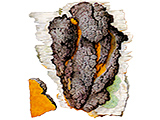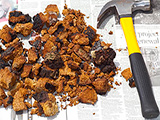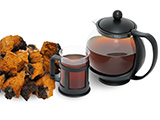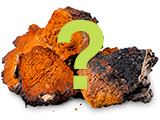Siberian Chaga extract contains an extraordinary amount of SOD, Superoxide Dismutase. SODs are enzymes that keep cell membranes supple and healthy. SOD enzymes decrease as we age, depending on genetic predisposition.
SOD Testing
A quantitative assessment of the levels of antioxidant activity of SOD enzymes showed that Siberian Chaga had values that are extraordinarily high in comparison to other medicinal mushrooms and popular juices having high antioxidant content. These tests give further proof of the extraordinary antioxidant properties and protective effects of Chaga, resulting from all the phytoactive ingredients in its make-up.
SOD Value Per Gram Analysis and Study:
(Dept. of Health and Food Services Research Center - Tokyo, Japan)
| Mushroom | SOD Value |
|---|---|
| Siberian Chaga | 35,000 units/g |
| Linghzi/Reishi | 1,400 units/g |
| Truffles | 860 units/g |
| Agaricus | 1,500 units/g |
| Phellintus Linteus | 1,400 units/g |
| Grifola Frondosa | 1,400 units/g |
Wiki:
Superoxide dismutase (SOD) is an enzyme that alternately catalyzes the dismutation (or partitioning) of the superoxide (O2−) radical into ordinary molecular oxygen (O2) and hydrogen peroxide (H2O2). Superoxide is produced as a by-product of oxygen metabolism and, if not regulated, causes many types of cell damage. Hydrogen peroxide is also damaging and is degraded by other enzymes such as catalase. Thus, SOD is an important antioxidant defense in nearly all living cells exposed to oxygen. One exception is Lactobacillus plantarum and related lactobacilli, which use a different mechanism to prevent damage from reactive O2−.
Pharmacological activity
SOD has powerful antiinflammatory activity. For example, SOD is a highly effective experimental treatment of chronic inflammation in colitis. Treatment with SOD decreases reactive oxygen species generation and oxidative stress and, thus, inhibits endothelial activation. Therefore, such antioxidants may be important new therapies for the treatment of inflammatory bowel disease.
An SOD-mimetic agent, TEMPOL, is currently in clinical trials for radioprotection and to prevent radiation-induced dermatitis. TEMPOL and similar SOD-mimetic nitroxides exhibit a multiplicity of actions in diseases involving oxidative stress.
Cosmetic uses
SOD may reduce free radical damage to skin - for example, to reduce fibrosis following radiation for breast cancer. Studies of this kind must be regarded as tentative, however, as there were not adequate controls in the study including a lack of randomization, double-blinding, or placebo. Superoxide dismutase is known to reverse fibrosis, possibly through de-differentiation of myofibroblasts back to fibroblasts.






